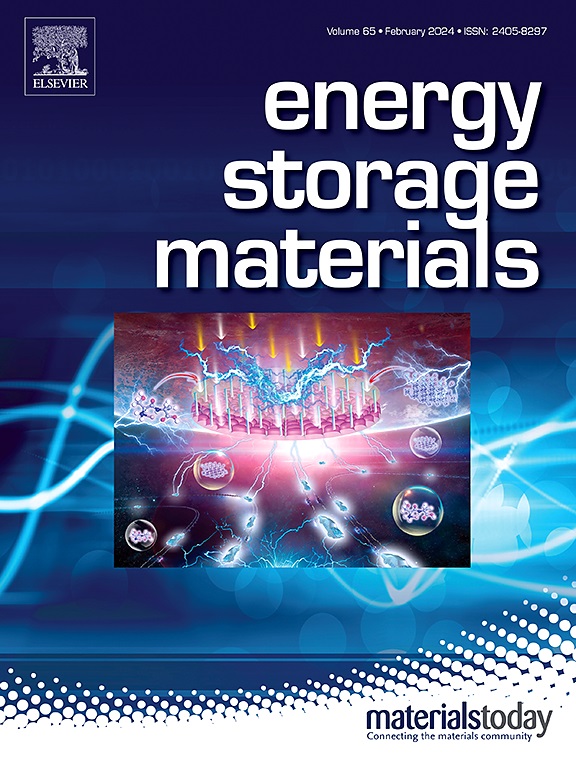Challenges and rational design approaches of high-energy-density rechargeable zinc-sulfur batteries
IF 20.2
1区 材料科学
Q1 CHEMISTRY, PHYSICAL
引用次数: 0
Abstract
Rechargeable zinc-sulfur (Zn-S) batteries have attracted considerable attention owing to their advantages of low cost, high safety, and high energy density. Despite facing critical challenges such as low electrical conductivity, sluggish reaction kinetics, and polysulfide shuttle effect, the latest advancements in active material design and electrolyte engineering have brought about significant breakthroughs. In this review, we first delve into the electrochemistry differences and key challenges of Zn-S batteries in both aqueous and nonaqueous electrolyte systems. Then, several effective approaches at the cathode side, including electrocatalytic function, host architecture design, selenium/tellurium incorporating, hybrid configuration with Cu2+ charge carrier, and electrolyte engineering, are summarized to improve reaction kinetics and cycling stability. Further breakthroughs will rely on integrating S structure/morphology regulation, interface design, anode optimization and multi-scale characterizations. This review contributes to more comprehensive understanding in the reaction mechanisms and constructive strategies, which is expected to further facilitate the rapid development and practical application of high-energy-density Zn-S batteries.


高能量密度可充电锌硫电池的挑战与合理设计途径
锌硫可充电电池以其低成本、高安全性和高能量密度等优点而备受关注。尽管面临着电导率低、反应动力学迟钝、多硫穿梭效应等严峻挑战,但活性材料设计和电解质工程的最新进展已经带来了重大突破。在这篇综述中,我们首先深入研究了锌- s电池在水和非水电解质体系中的电化学差异和主要挑战。在此基础上,从电催化功能、主体结构设计、硒/碲的掺入、Cu2+载流子的杂化配置以及电解质工程等方面总结了提高反应动力学和循环稳定性的有效途径。进一步的突破将依赖于集成S结构/形态调节,界面设计,阳极优化和多尺度表征。本文综述有助于更全面地了解其反应机理和构建策略,以期进一步促进高能量密度锌- s电池的快速发展和实际应用。
本文章由计算机程序翻译,如有差异,请以英文原文为准。
求助全文
约1分钟内获得全文
求助全文
来源期刊

Energy Storage Materials
Materials Science-General Materials Science
CiteScore
33.00
自引率
5.90%
发文量
652
审稿时长
27 days
期刊介绍:
Energy Storage Materials is a global interdisciplinary journal dedicated to sharing scientific and technological advancements in materials and devices for advanced energy storage and related energy conversion, such as in metal-O2 batteries. The journal features comprehensive research articles, including full papers and short communications, as well as authoritative feature articles and reviews by leading experts in the field.
Energy Storage Materials covers a wide range of topics, including the synthesis, fabrication, structure, properties, performance, and technological applications of energy storage materials. Additionally, the journal explores strategies, policies, and developments in the field of energy storage materials and devices for sustainable energy.
Published papers are selected based on their scientific and technological significance, their ability to provide valuable new knowledge, and their relevance to the international research community.
 求助内容:
求助内容: 应助结果提醒方式:
应助结果提醒方式:


